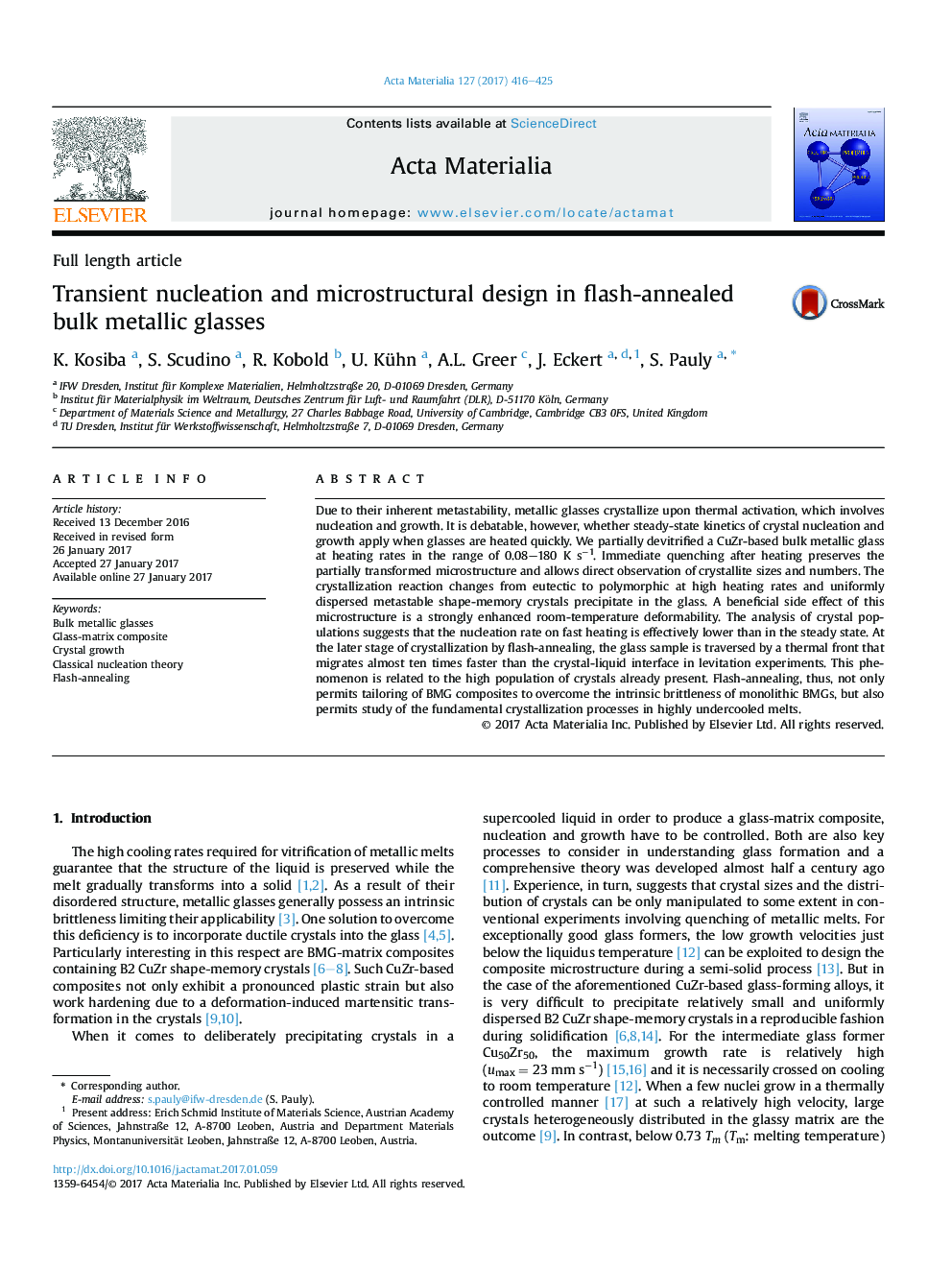| Article ID | Journal | Published Year | Pages | File Type |
|---|---|---|---|---|
| 5436345 | Acta Materialia | 2017 | 10 Pages |
Due to their inherent metastability, metallic glasses crystallize upon thermal activation, which involves nucleation and growth. It is debatable, however, whether steady-state kinetics of crystal nucleation and growth apply when glasses are heated quickly. We partially devitrified a CuZr-based bulk metallic glass at heating rates in the range of 0.08-180Â KÂ sâ1. Immediate quenching after heating preserves the partially transformed microstructure and allows direct observation of crystallite sizes and numbers. The crystallization reaction changes from eutectic to polymorphic at high heating rates and uniformly dispersed metastable shape-memory crystals precipitate in the glass. A beneficial side effect of this microstructure is a strongly enhanced room-temperature deformability. The analysis of crystal populations suggests that the nucleation rate on fast heating is effectively lower than in the steady state. At the later stage of crystallization by flash-annealing, the glass sample is traversed by a thermal front that migrates almost ten times faster than the crystal-liquid interface in levitation experiments. This phenomenon is related to the high population of crystals already present. Flash-annealing, thus, not only permits tailoring of BMG composites to overcome the intrinsic brittleness of monolithic BMGs, but also permits study of the fundamental crystallization processes in highly undercooled melts.
Graphical abstractDownload high-res image (158KB)Download full-size image
